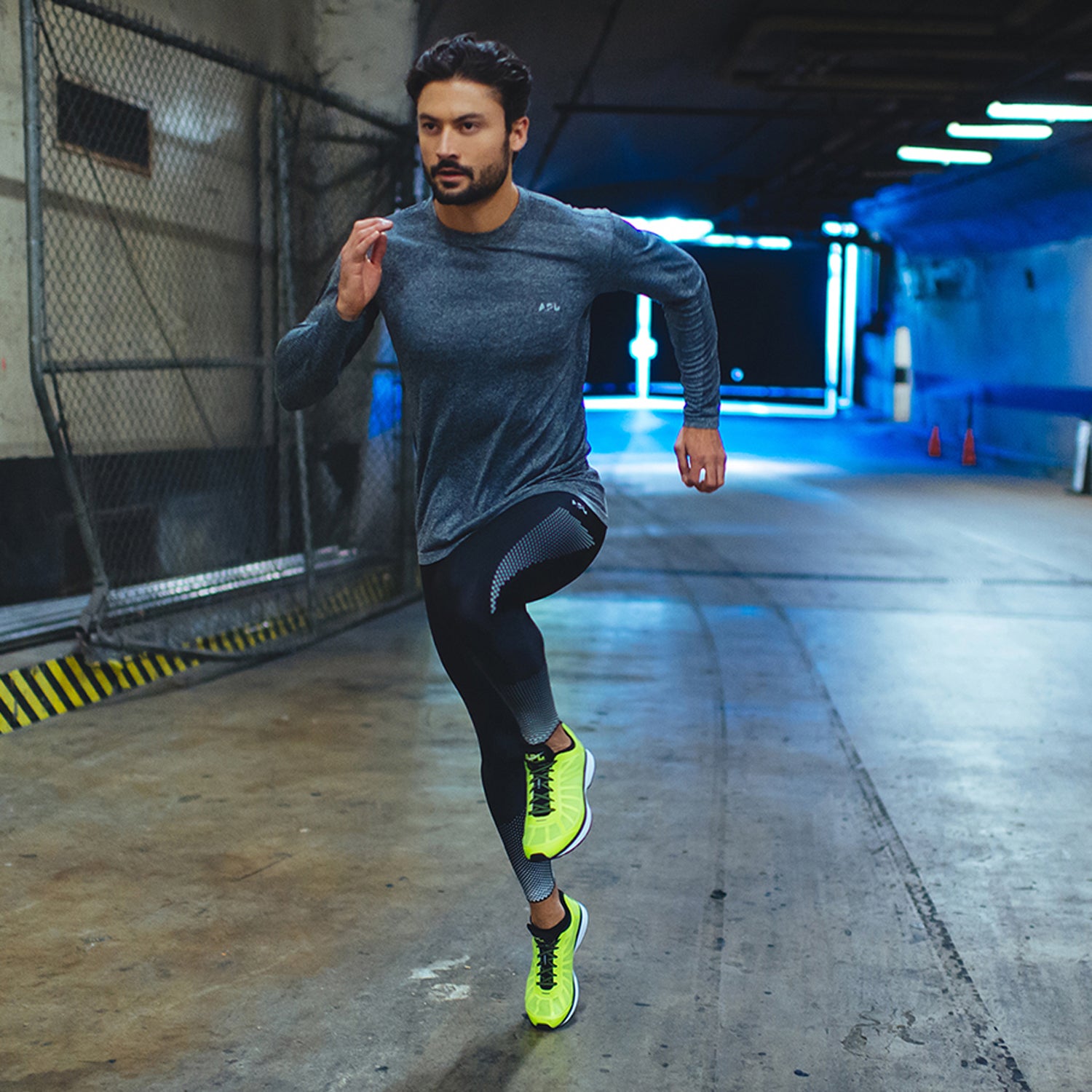Fans of competitive swimming will remember 2008 as the year Speedo released its now infamous LZR Racer suit, thereby enabling Michael Phelps to fulfill his destiny and become the world’s first man/porpoise hybrid.
The “world’s fastest swimsuit,” as it was marketed at the time, included NASA-designed polyurethane panels and ultrasonically welded seams. Swimmers wearing the LZR Racer set 79 world records that year. At the Beijing Olympics, 94 percent of gold medals in swimming events went to LZR-clad athletes. Such lopsidedness couldn’t go unnoticed, and critics of the supersuit complained that its hyper-engineered design gave wearers an unfair advantage.
“Basically, it’s technical doping,” U.S. swim legend Janet Evans said at the time. FINA responded by banning the use of the high-tech swimsuits after the 2009 season, with the predictable consequence that most swim records set in 2008 and 2009 would be out of reach for years to come. (FINA rule changes also explain why, when YouTube-ing races from the Beijing Olympics, you’ll see male swimmers in full body suits. By the time the Games took place in London four years later, the glabrous torso show had made its triumphant return.)
Speedo’s LZR suit, and FINA’s delayed response, is a typical example of technological advances outpacing the regulatory powers meant to keep them in check; the suit was introduced in February 2008 and records began to fall the following week.
After feasting our eyes on the Indiegogo campaign for the Enko Running shock-absorbing, energy-boosting shoe we started to wonder: Could pro running could follow (the LZR) suit?

There are few, if any, sports that require less gear than running. But advances in shoe design may soon force regulatory bodies to further expound on what is allowed and what isn’t. In the current issue of Outside, we feature an article on Athletic Propulsion Labs, a company whose concept basketball shoe was banned by the NBA on the grounds that its spring technology increased players’ vertical leap and bestowed “undue competitive advantages.”
Employing its patented Load N’ Launch system and something called “Propelium,” APL has now also developed spring-loaded running shoes that will allegedly add propulsion to your stride and make you faster, just like Enko promises. Regardless of how credulous you are that you can load n’ launch yourself all the way to a new PR, if these companies’ innovations do prove as effective as they claim, could pro athletes potentially be banned from using their products?
I put that question to Ryan Goldston, who co-owns APL with his brother Adam.
“Our shoes allow people to unlock their potential in a natural way,” Goldston told me. “It’s all about harnessing your athleticism.”
Granted, Goldston will be somewhat biased against the over-regulation of products. But he was adamant that there is “constant improvement” in running shoe design and that, as in other sports, a breakthrough may be viewed skeptically at the outset, and then become the widely used standard. He cited Big Bertha’s gargantuan golf drivers, and auto racing as two salient examples. “It’s like car engines,” he said. “There’s a constant push to build better, more powerful engines.”
[quote]“Our shoes allow people to unlock their potential in a natural way,” says Athletic Propulsion Labs co-founder Ryan Goldston. “It’s all about harnessing your athleticism.”[/quote]
When I asked Goldston what it meant for an athlete to unlock their “natural” potential, he was quick to draw a distinction between using a pair of well-designed running shoes and using performance-enhancing drugs. For him, it was a question of access and whether, in the constant fight to gain a competitive edge, athletes were doing harm to themselves. In this sense, the detrimental side effects of PEDs were de facto proof of their “unnaturalness.”
“Look, if everyone has the same opportunity to use a product and there’s nothing harmful about that product than I don’t see a problem with that,” Goldston said.
On the question of access, Goldston did admit that athletes who had sponsorship agreements with certain brands could be at a disadvantage when another company suddenly has a brilliant innovation. This is what happened to Japanese swimmers during the LZR craze, as their contracts with Mizuno and other swimsuit-makers prohibited them from racing in Speedo suits.
Time will tell if APL, Enko, or another company will suddenly unveil a similarly magical running shoe that will make everyone else look like they’re racing in ski boots. But at present, the IAAF doesn’t seem too worried. When I contacted Imre Mátraházi, a technical manager at the federation’s Competition’s Department, he wrote that they didn’t have a lot of official regulations on footwear and that it was usually up to referees at the time of competition to make a call on bogus attire. Thus far, however, there had been no major cases of rule breach by an athlete, the kerfuffle surrounding Oscar Pistorious’s Cheetah legs being an exception.
Mátraházi referred me to Rule 143 of the IAAF Competition Rules, which states:
Athletes may compete barefoot or with footwear on one or both feet. The purpose of shoes for competition is to give protection and stability to the feet and a firm grip on the ground. Such shoes, however, must not be constructed so as to give an athlete any unfair additional assistance, including by the incorporation of any technology which will give the wearer any unfair advantage. A shoe strap over the instep is permitted. All types of competition shoes must be approved by IAAF.
So there it is. And while one might argue that this regulation is only helpful to the extent that everyone agrees on what precisely constitutes an “unfair advantage,” the fact that the rule doesn’t elucidate further suggests that up until now it hasn’t needed to.
Perhaps, in an age of endless fine print, where we have rules and regulations up the wazoo, there’s still room for debate about the future role of technology in sport.
Or maybe not. I sent Mátraházi a link to Enko’s mechanical shoe, under the assumption that it wouldn’t pass muster.
To which, I received the laconic response:
Dear Fritz,
You are correct in assuming that the Enko shoe would not be allowed.
Best Regards,
IAAF


